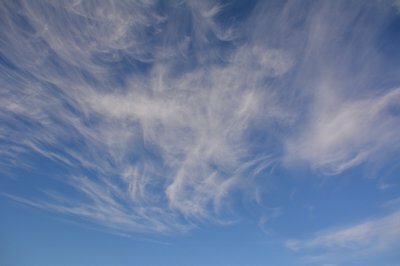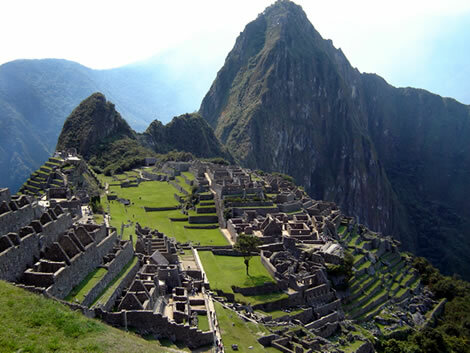Atmosphere Characteristics
Science / / July 04, 2021
It is called atmosphere to the layer that surrounds some celestial bodies, which is formed by various gases that are attracted by force gravitational force of the celestial body to which they belong, remaining stable surrounding the body at certain heights of the same. It is within the atmosphere of our planet where the air we breathe is found, which is a mixture of various gases and substances. such as Nitrogen, Oxygen, Carbon Dioxide, Ozone, Water and Dust Particles, which are found in different amounts within her.
In the case of the earth, the atmosphere is approximately 2,000 to 10,000 kilometers thick if we count its outermost part the Exosphere, concentrating more or less half of the compounds that make up its mass in the first eleven or twelve kilometers, which are those that form the so-called troposphere.
In the lower layers between 9 kilometers at the poles and 17 to 18 kilometers high at the equator, it has a consistent homogeneity in a combination of Nitrogen (78%), Oxygen (21%) water vapor and other gases, which are ideal for plant respiration and animals.

Characteristics of the Earth's Atmosphere:
It is vital for life. It is the gaseous envelope that surrounds our planet being attached to it thanks to the gravitational force. It is made up of various gases and dust particles, as well as is populated by various microorganisms (in the troposphere). Thanks to it, there are various atmospheric phenomena such as clouds, rain, winds, lightning, etc. Without it, life on the planet would not be possible, because lacking it, the heat caused by the sun or extreme cold, as well as the cosmic rays, they would exterminate any form of life on the surface in addition to the water evaporating, being the protective layer that regulates the surface temperatures planetary. It also protects the planet from numerous meteorite impacts that are worn away when entering it.
Composition.- Our atmosphere is made up of various gases, as well as solid particles suspended in it (dust particles). The gases of which it is composed are Nitrogen (N2), 78.084%, Oxygen (O2) 20.946%, Argon (Ar) 0.946%, Carbon Dioxide (CO2) 0.0387%, Neon (Ne) 0.001818%, Helium (He) 0.000524%, Methane (CH4) 0.000179%, Krypton (Kr) 0.000114%, Hydrogen (H2) 0.000051, Nitrous Oxide (N2O) 0.00003%, Xenon (Xe), Ozone (O3), Nitrogen Dioxide (NO2), Iodine (I), Ammonia (NH3) as well as other gases in smaller proportions, and a large amount of water vapor.
Temperature variation.- In the different layers there is a decrease in temperature along with the increase in altitude, except in the troposphere, where thanks the ozone layer has the opposite effect, increasing the temperature when ultraviolet radiation of the UV-B type is absorbed and UV-C. In this regard, it should be noted that the type of UV-A rays can penetrate the ozone layer, but unlike UV-B and UV-C rays, they are not so harmful to human beings. alive, being even necessary for some chemical processes of living organisms, an example of this is when they intervene in the process of vitamin D in the skin of the being human.
Division.- It is divided into several layers according to its density, composition and various properties, the Troposphere being the most low, (the sea level is taken as a zero reference point to measure the layers atmospheric). The troposphere begins at sea level up to about twelve kilometers on average, being lower at the poles (nine kilometers) and higher at the equator (18 kilometers), followed by the Stratosphere, which follows it up to approximately 50 kilometers high, followed by the Mesosphere which reaches 80 or 85 kilometers from the surface, continued by the Thermosphere which begins around 100 km (in the so-called kármán line) which limits the 500 km height with the Exosphere, which is the outermost layer of the atmosphere, which borders the interstellar space.
Troposphere.- It is the layer in which life develops, as well as the different atmospheric phenomena such as air mass movements and water vapor; It is where clouds are formed and where most of the different climatic phenomena, rains, thermal changes, winds, and where the life of the surface develops due to its gaseous composition land. It is within this layer that birds and most airplanes fly. In it, the temperature decreases as the altitude increases, reaching 50 degrees below zero in the limits with the stratosphere, and in the same way, oxygen becomes scarce with increasing altitude.
Stratosphere.- It is the atmospheric layer that follows the Troposphere, starting from between 10 or 18 kilometers where the troposphere ends up to approximately fifty kilometers above sea level. In it, the temperature that exists in the tropopause (border between the troposphere and the stratosphere) increases, which there is between 50 or 55 degrees Celsius below zero, increasing the temperature as the altitude increases, due to the lack of humidity and the effects of ozone, which is found within the stratosphere (almost at its end), where around 90% of the atmospheric ozone, which is responsible for absorbing between 97 and 99% of ultra violet radiation (mainly UV rays of the UV-B and UV-C types, which are harmful to living beings, and without However, they allow part of the UV-A type UV rays to pass through, which are not so harmful to life (and are even necessary in certain quantities for living beings), allowing the existence of life. At the height of this part of the atmosphere, only a few supersonic aircraft of the type of the Concord, Mig-31 or SR-71, which can withstand the pressure and temperature changes that occur in those heights.
Mesosphere.- The mesosphere is the layer that continues to the stratosphere; it begins around 50 kilometers from the surface, extending up to 80 kilometers high. It is proportionally greater than the other previous layers, it contains about 0.1% of the mass total air, nitrogen and oxygen being the predominant gases in it, although there is also ozone and other gases. In this part of the atmosphere the pressure is much lower than that of the stratosphere. As the altitude increases, the temperature decreases between 70 or 80 degrees below zero, even reaching 90 degrees below zero, being the coldest part of the atmosphere.
Thermosphere.- The thermosphere or Ionosphere, In this part of the atmosphere the air temperature changes depending on the greater or lesser solar radiation that affects it both during the day and throughout the year, reaching temperatures of 1500 degrees Celsius or more. It is in this part of the atmosphere that the so-called polar and northern lights occur.
Exosphere.- It is the outermost part of the atmosphere, it begins between 600 or 800 kilometers from the surface, ending between 2,000 or 10,000 kilometers; it is the most distant atmospheric region from the earth's surface, bordering outer space. In this area the pressure is minimal, being almost non-existent. In it the air particles lose their physical-chemical qualities. Being constituted mainly by plasma matter (matter in the plasma state). In this part of the atmosphere, the ionization of molecules (particles) determines that the attraction of the earth's magnetic field is greater than that of the gravitational field. It is the part of the atmosphere in which the density of atoms is lower approaching the vacuum as the height rises reaching outer space.


